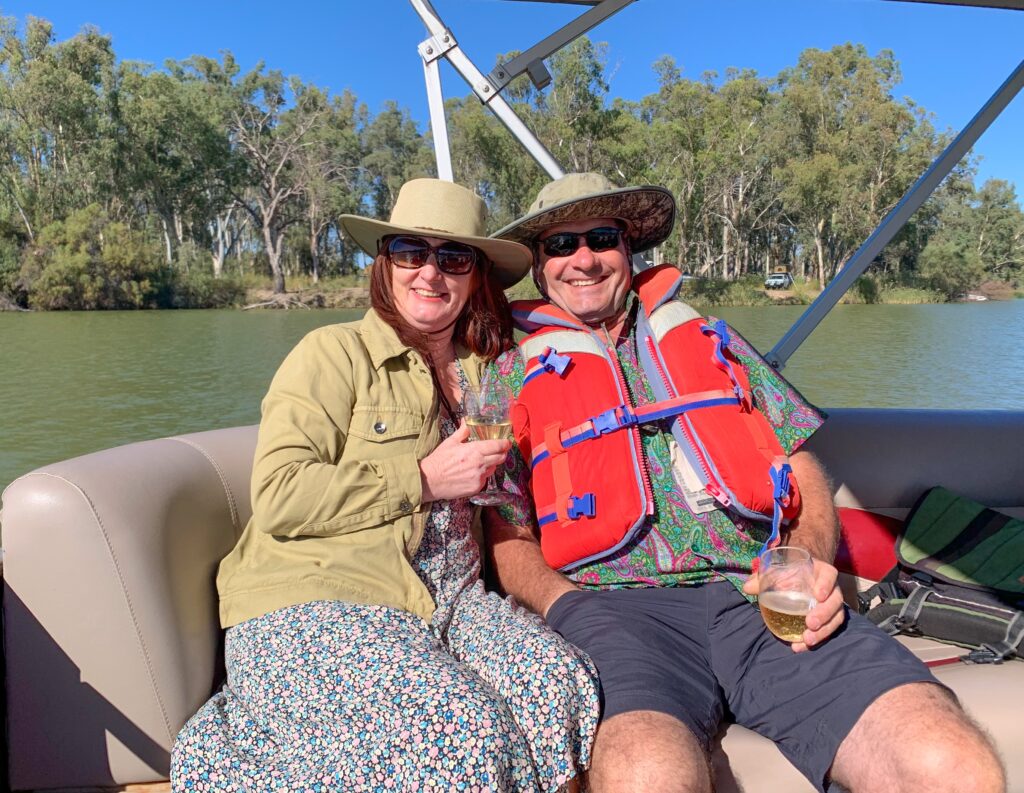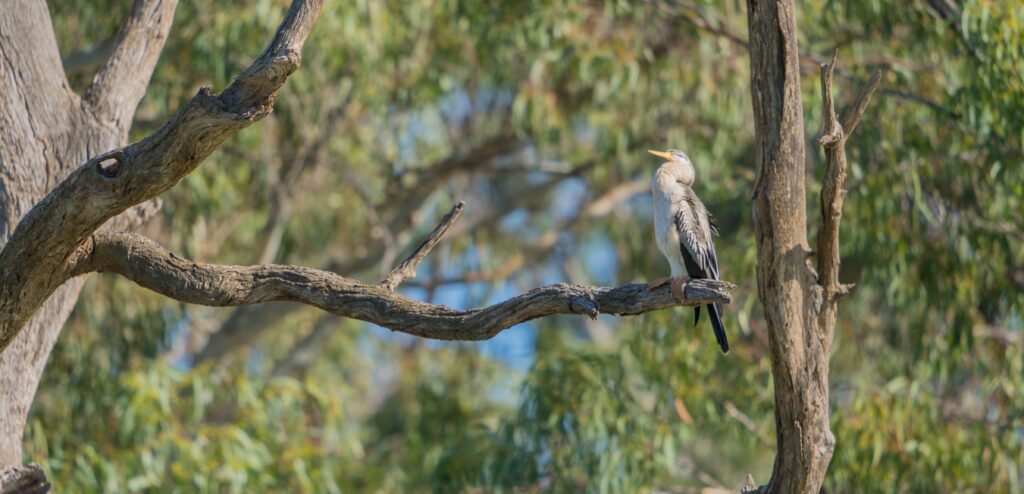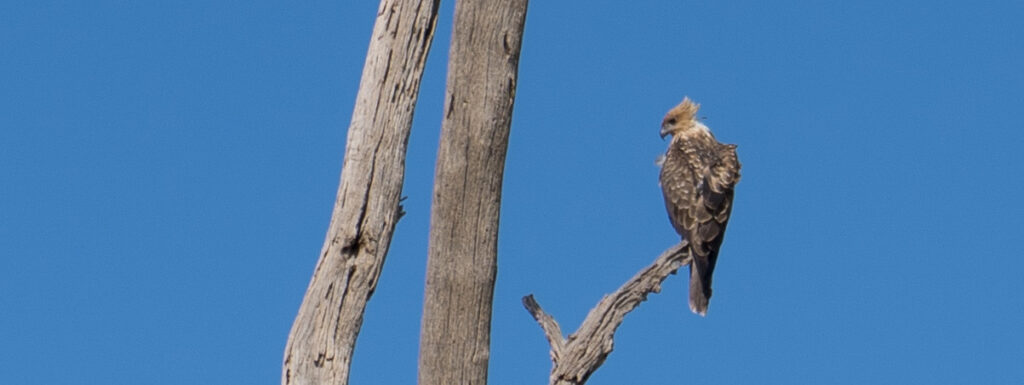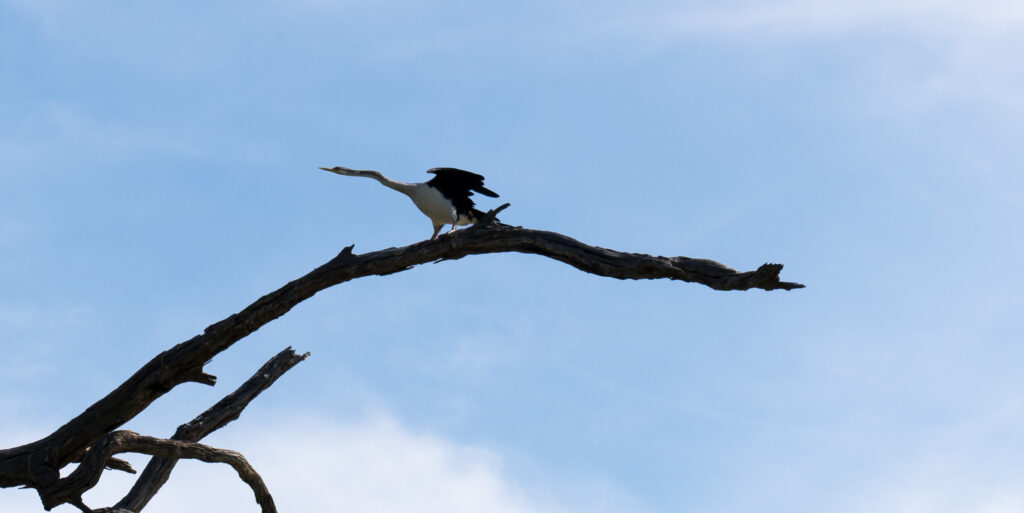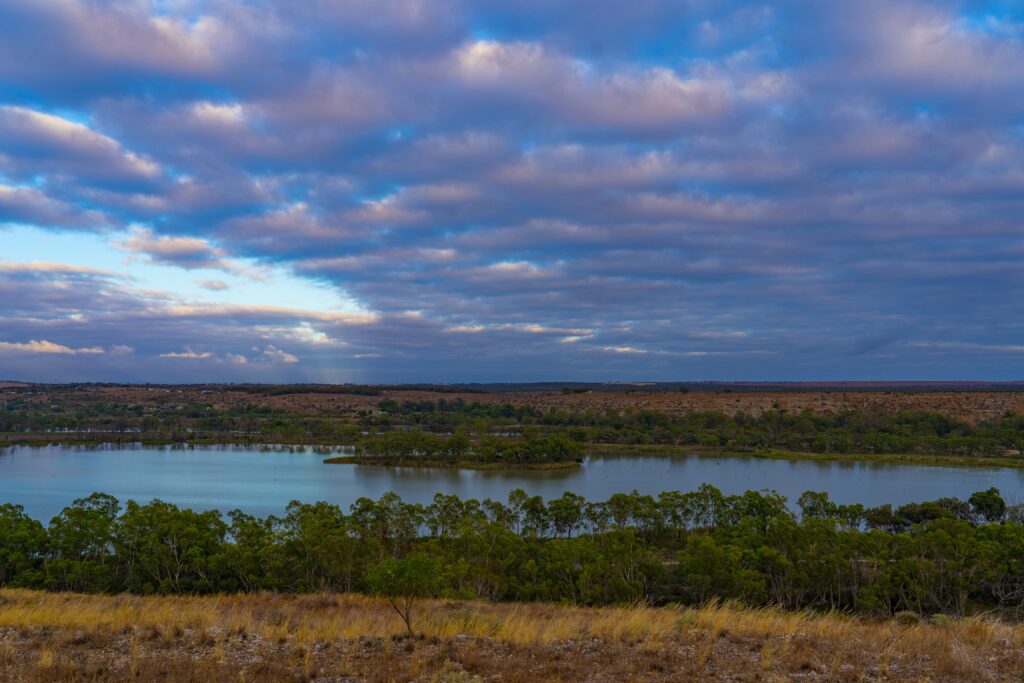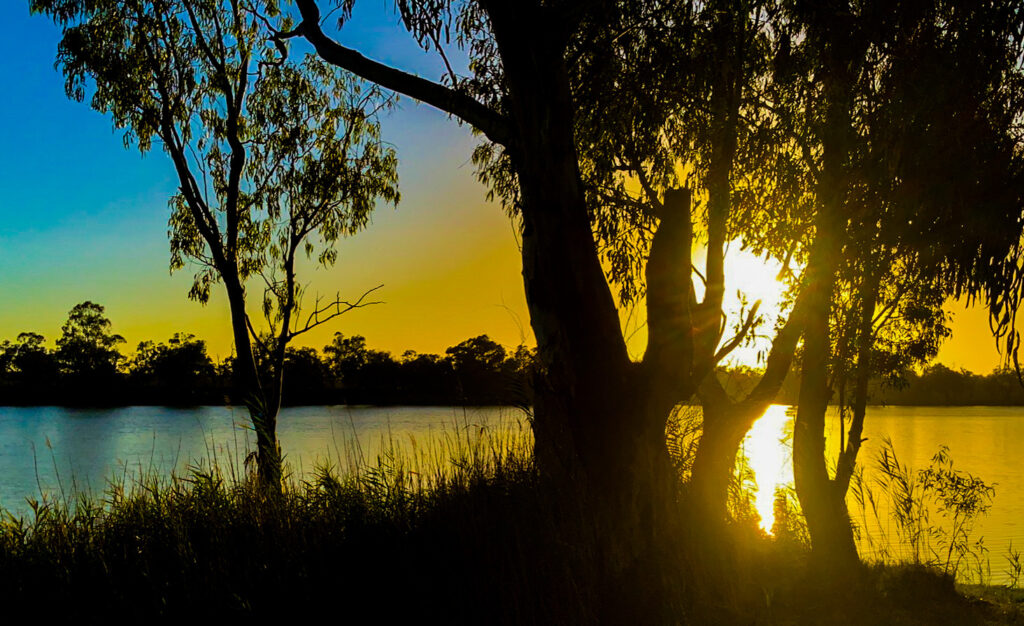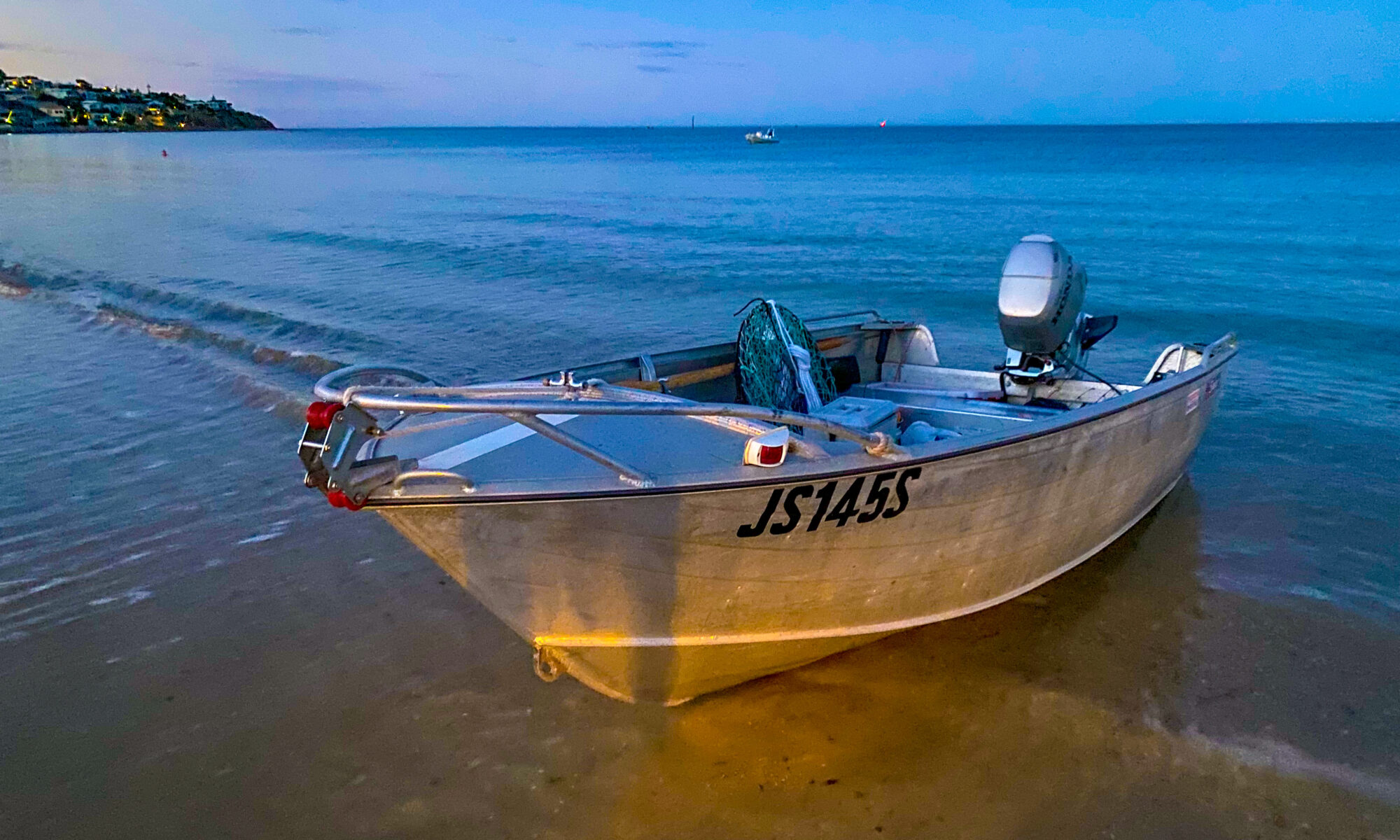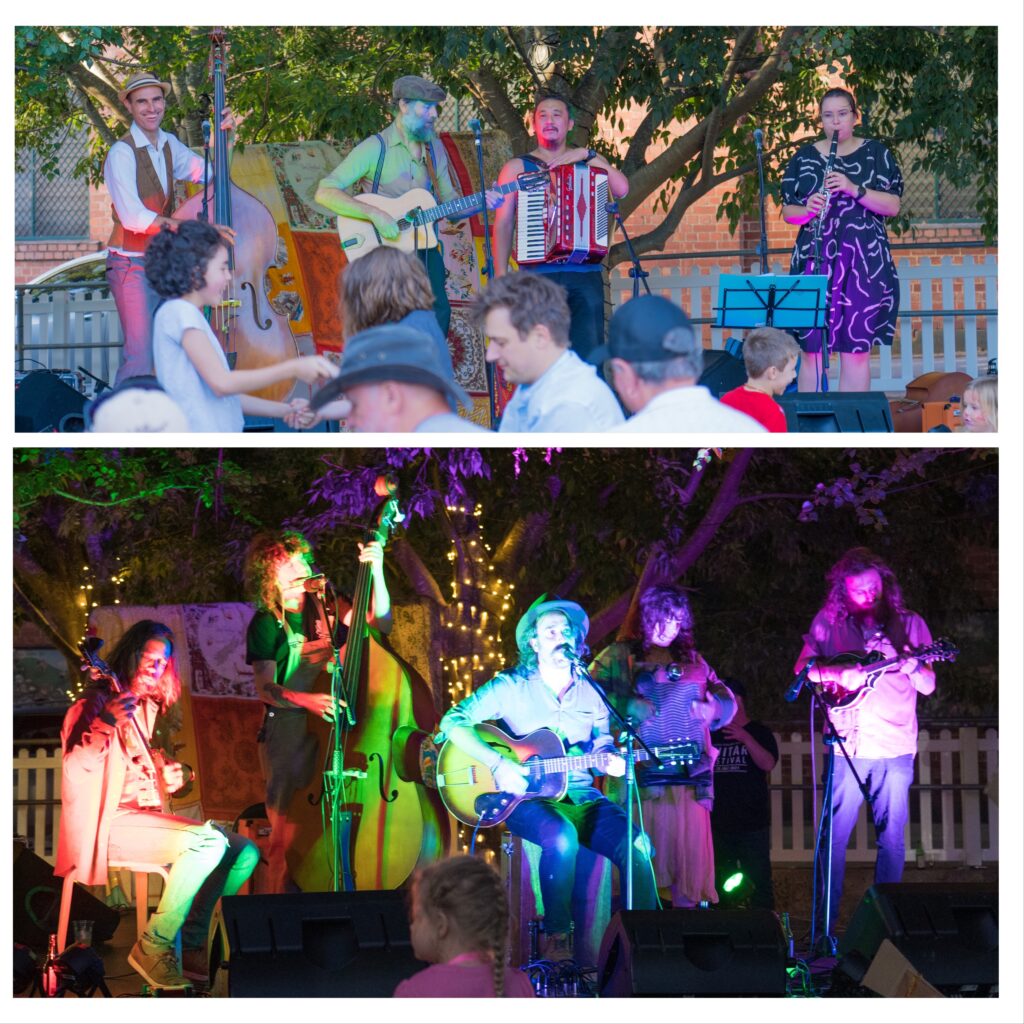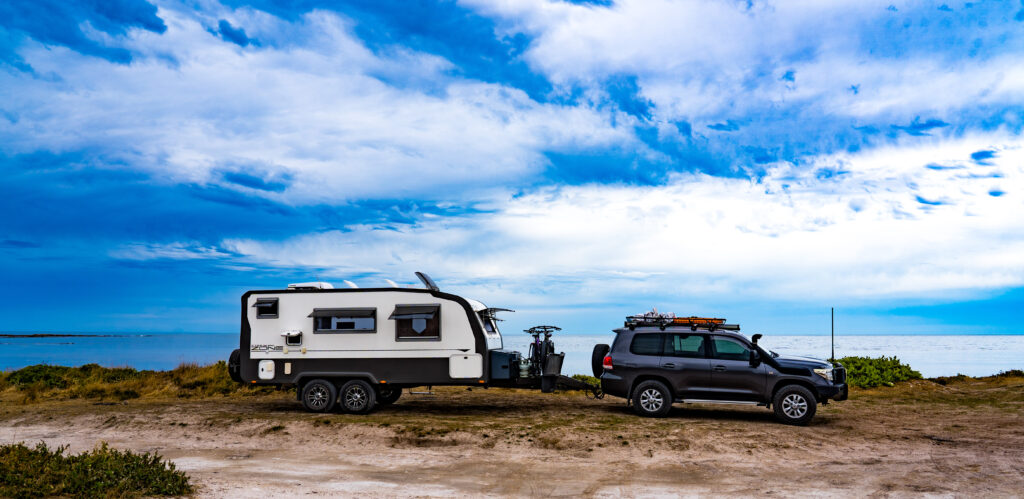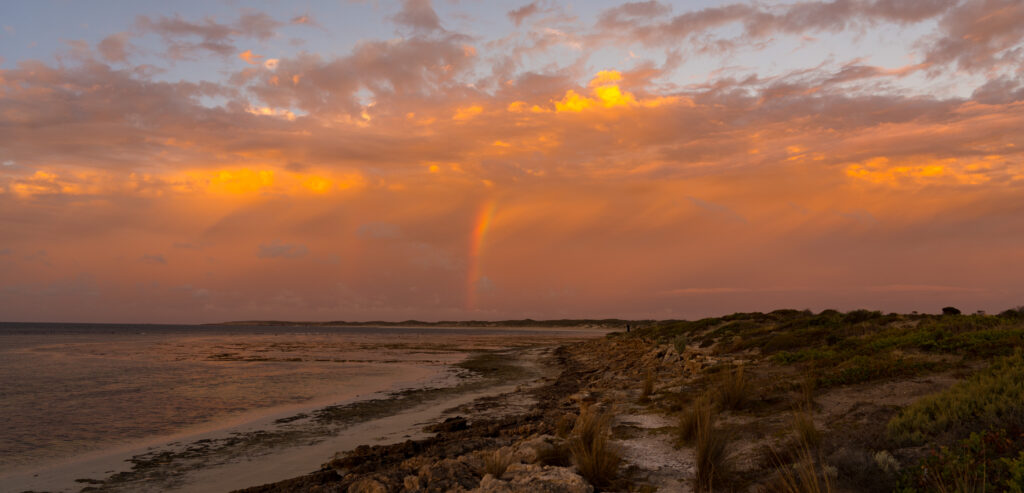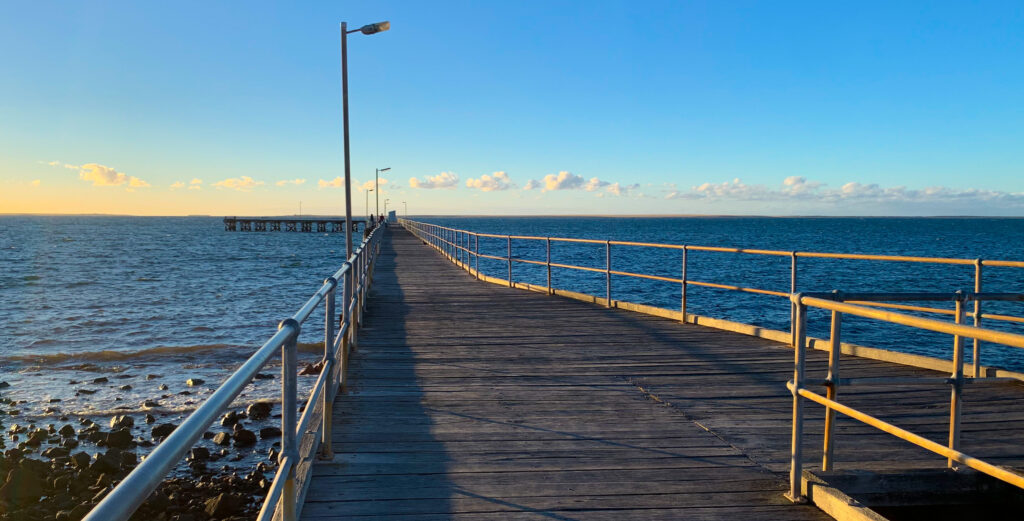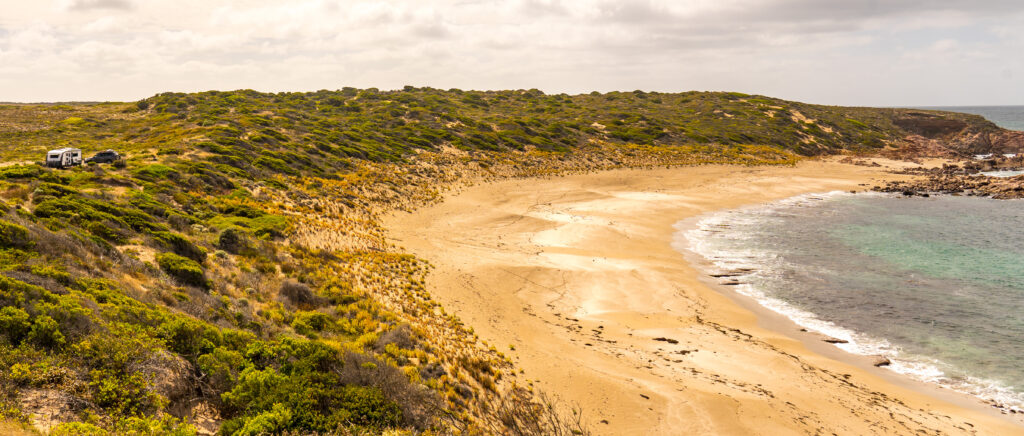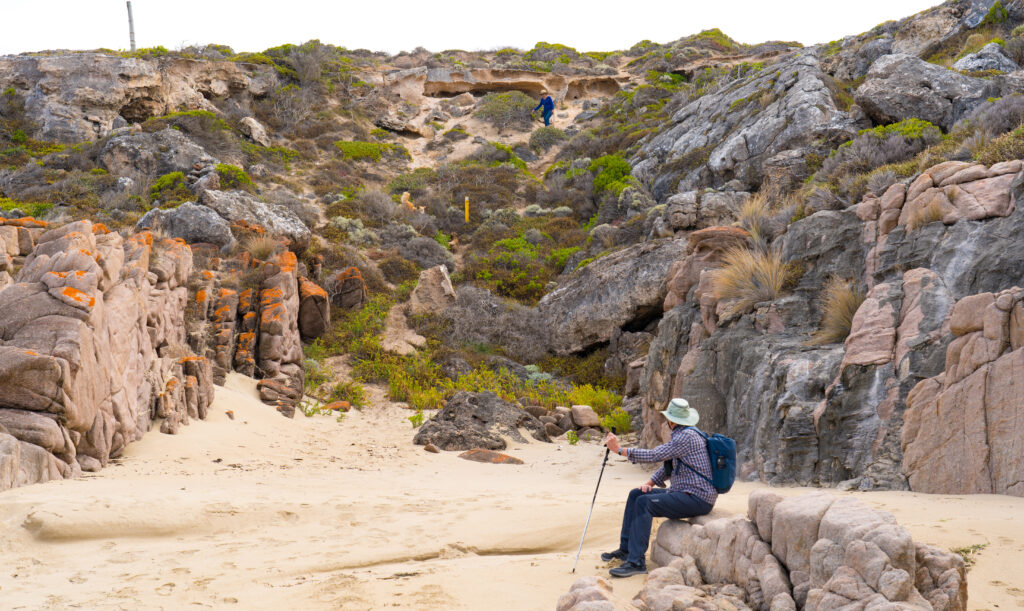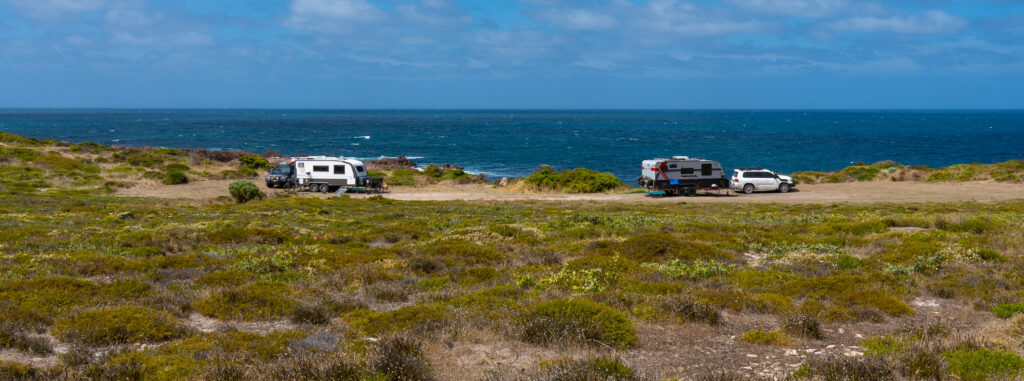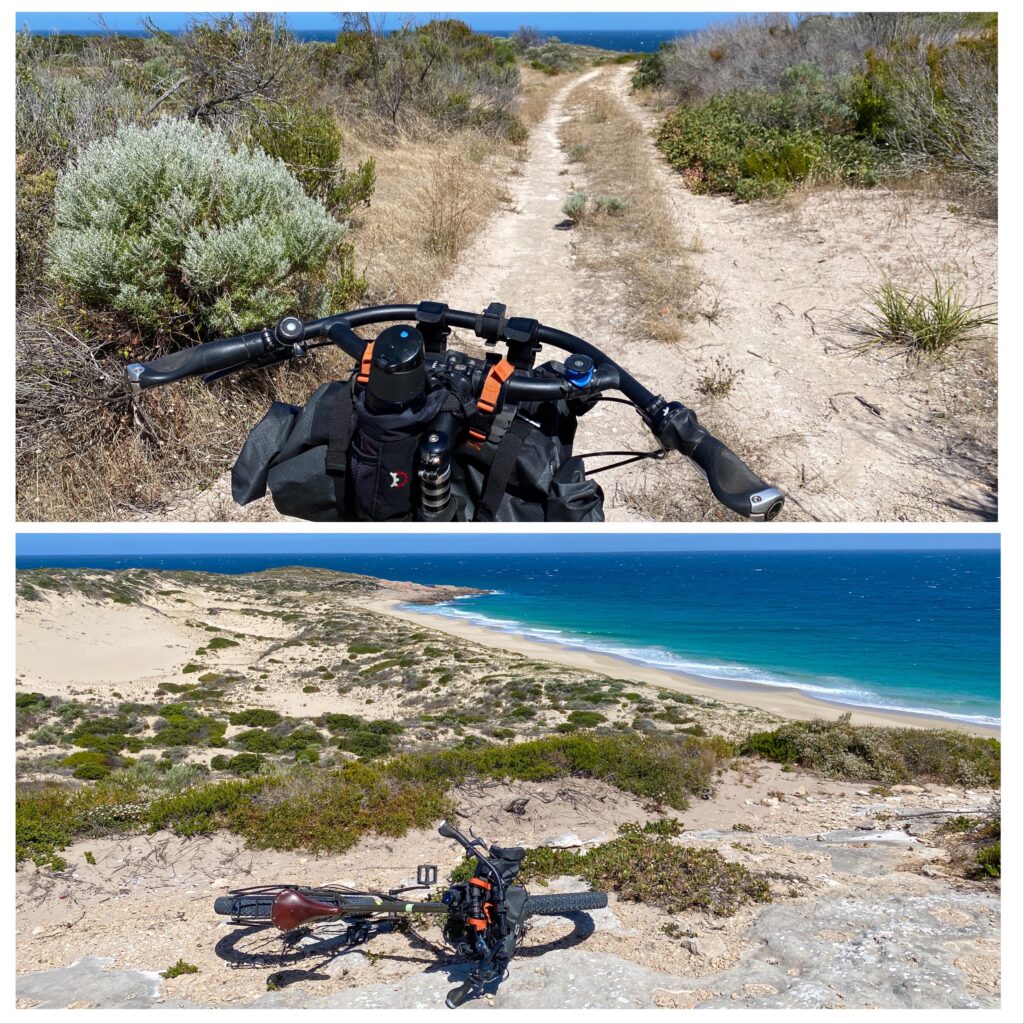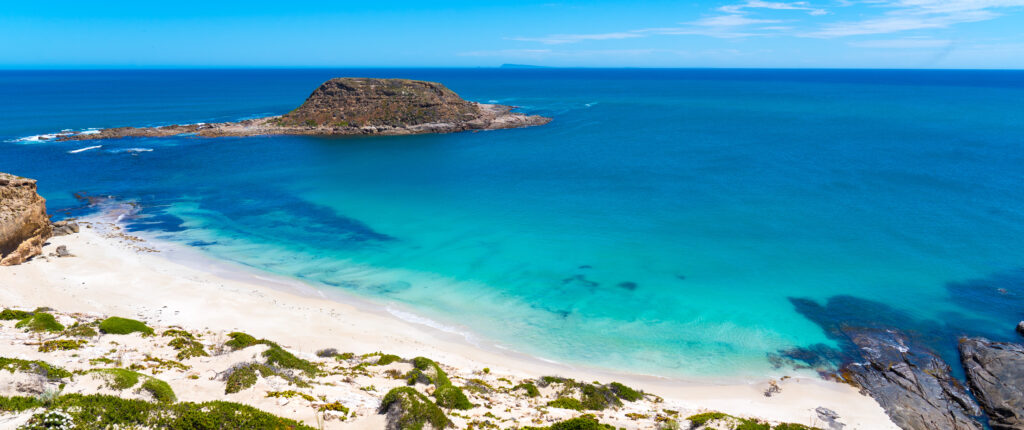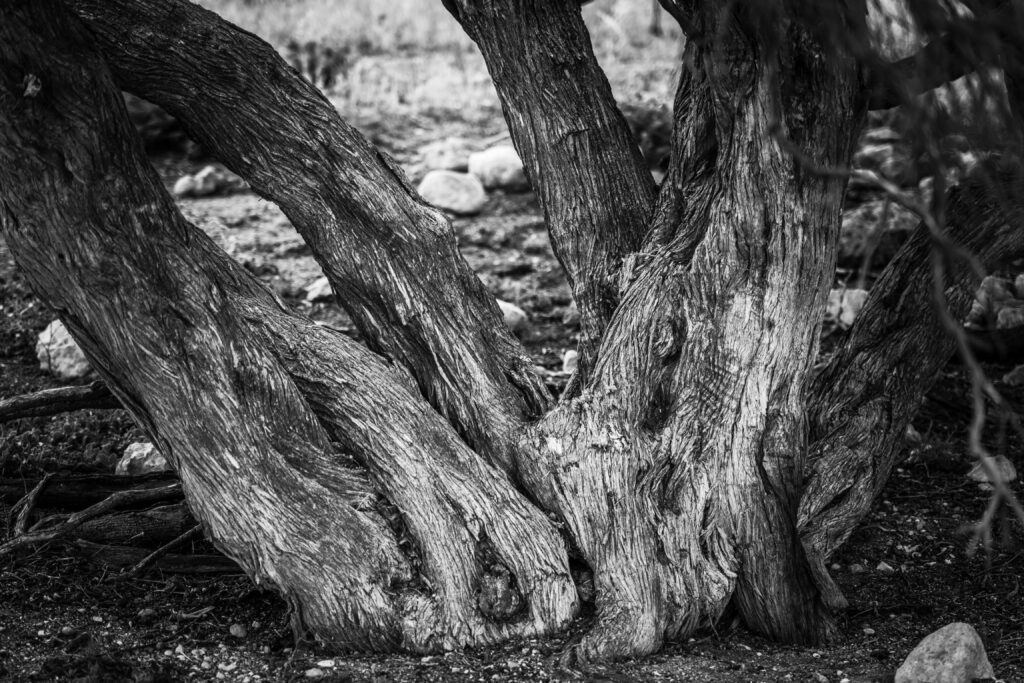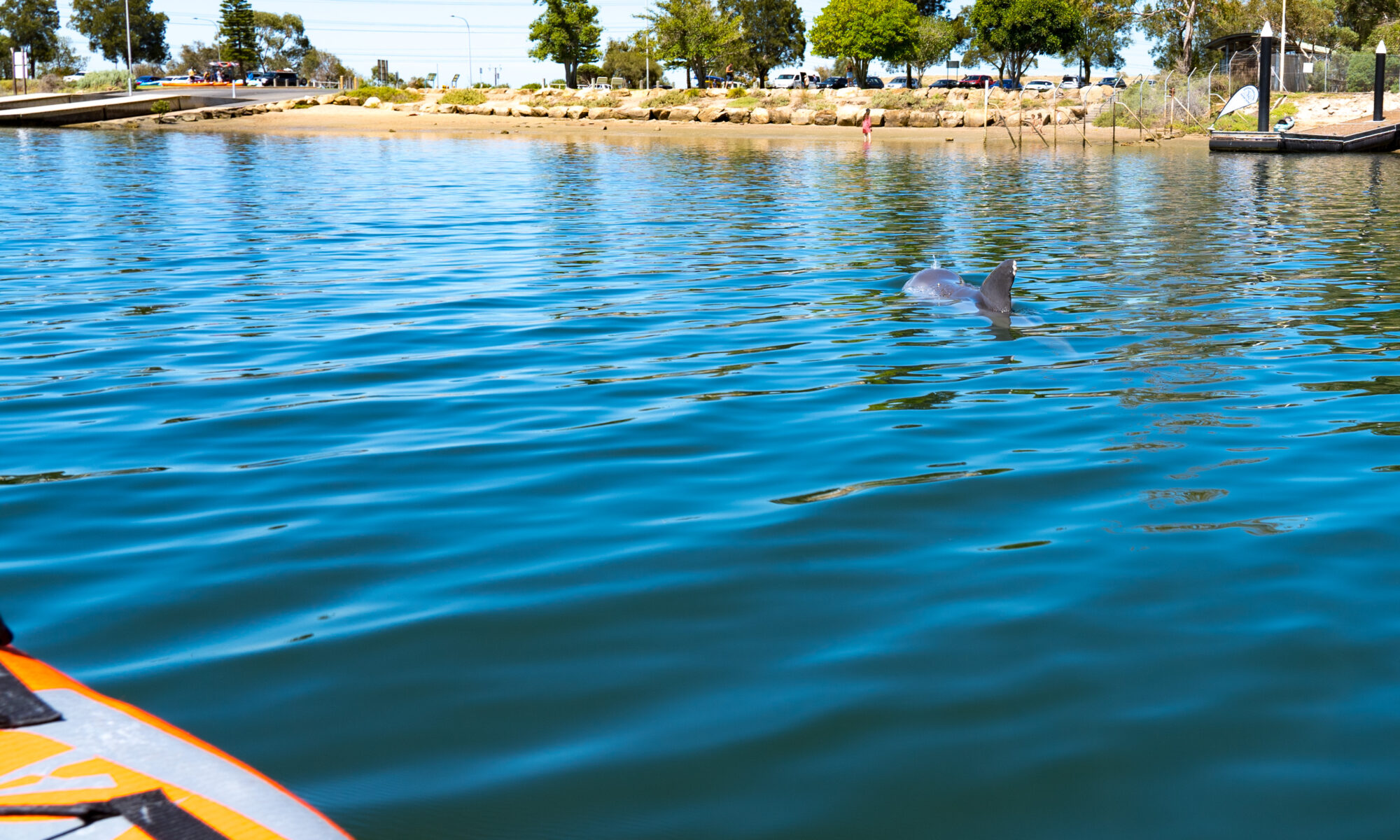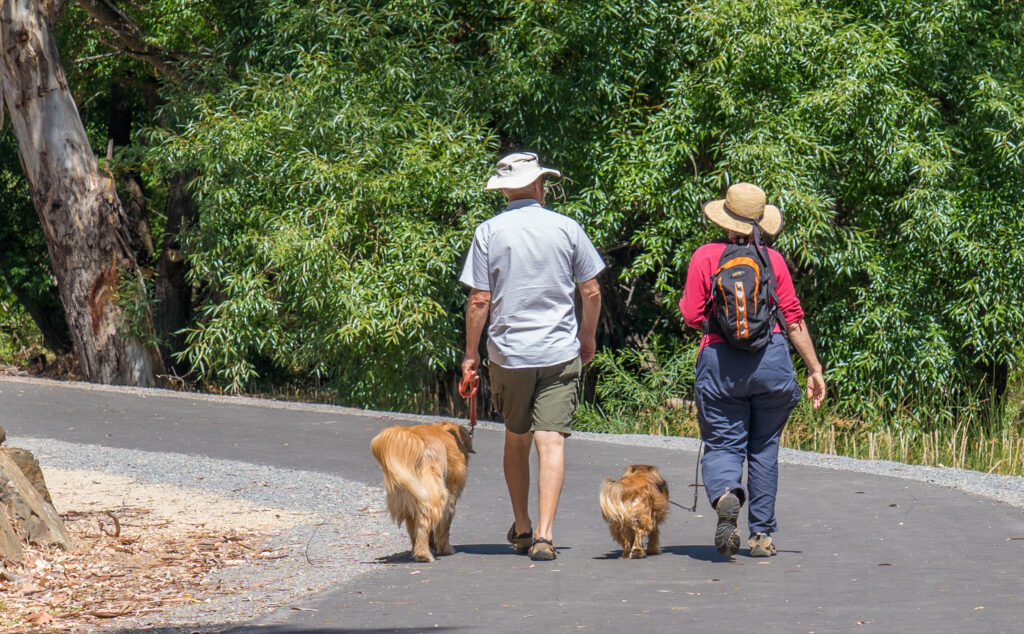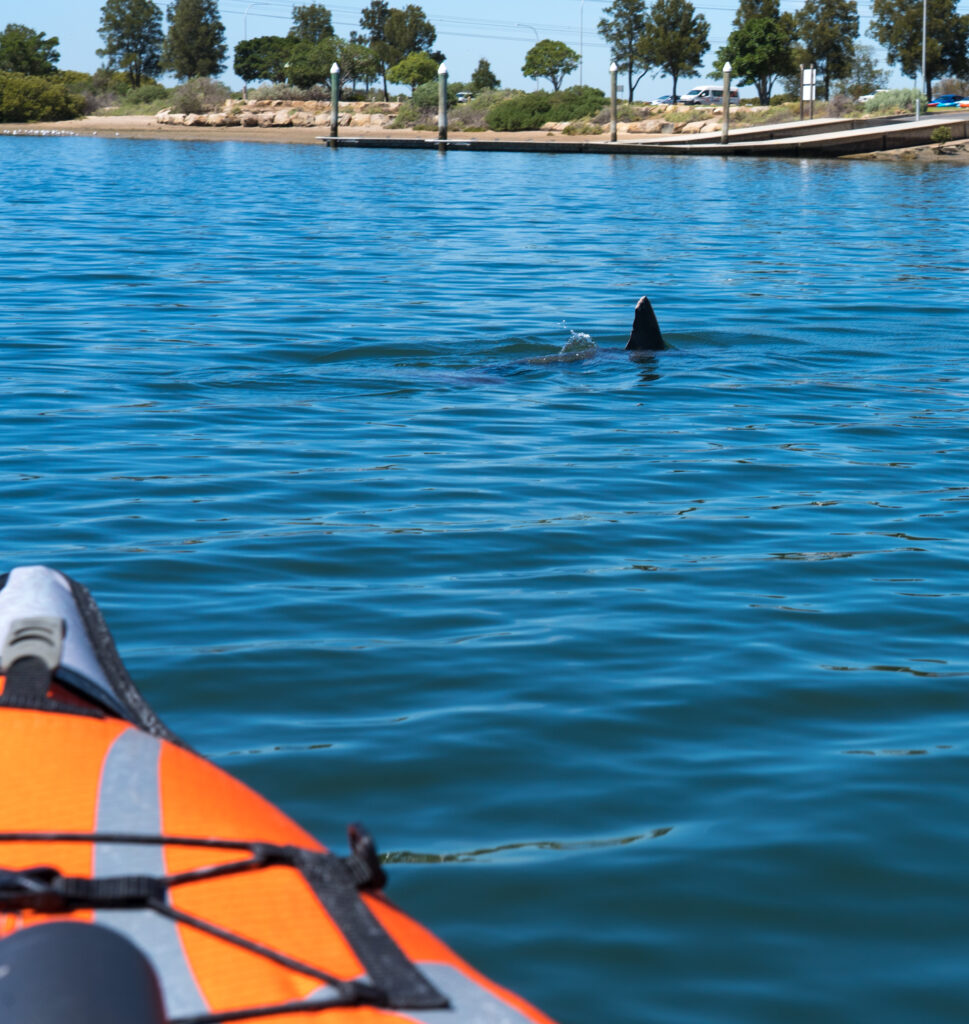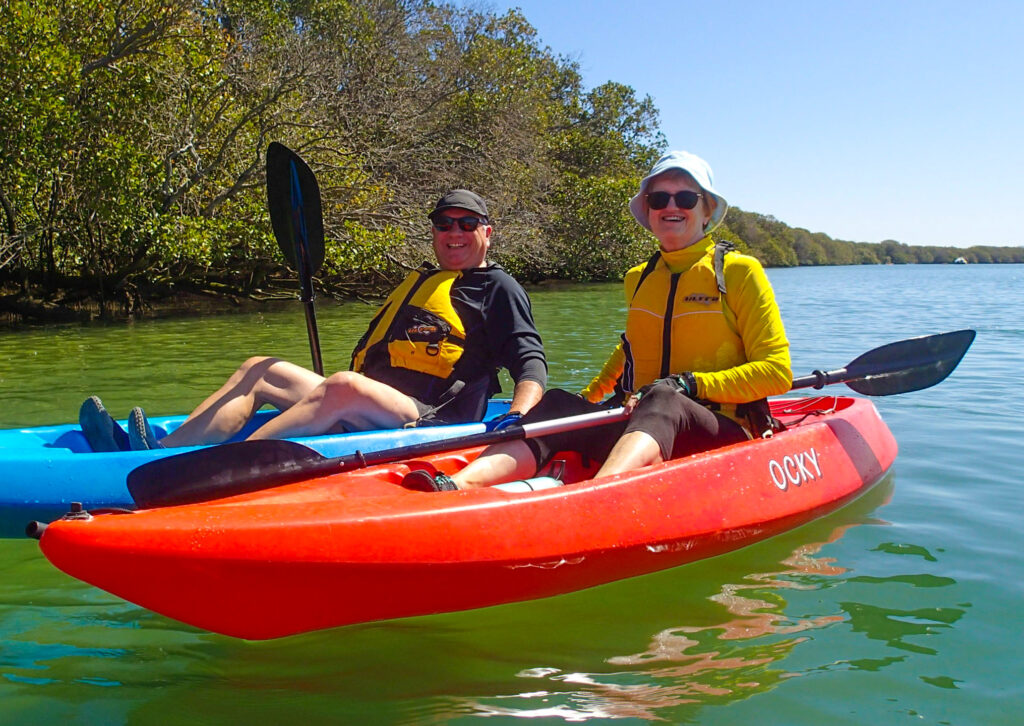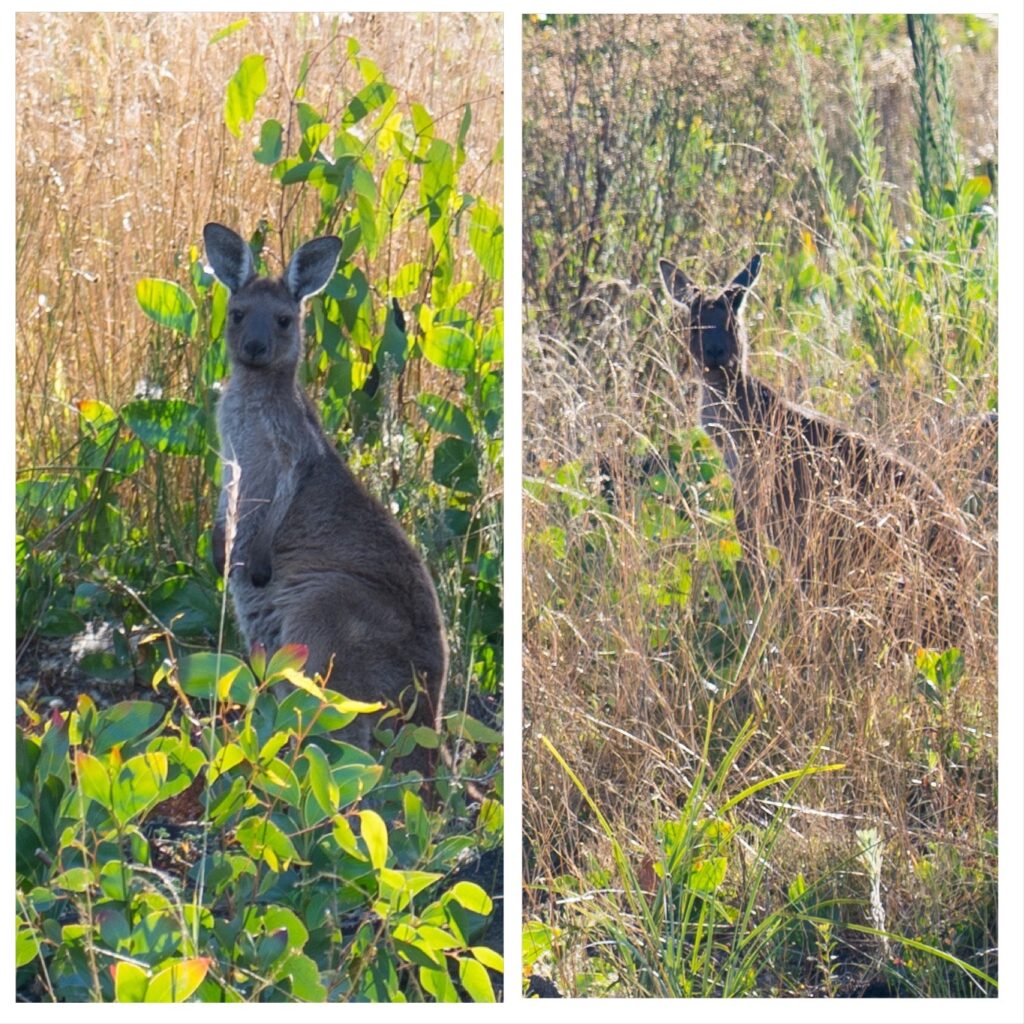Author: Mrs A
Location: Mungo National Park and Pooncarie, NSW, Australia
We farewelled Jenny who took off early into town to get her windscreen replaced, and did a final shop before making our way out of town. We had a couple of hours’ driving ahead of us on dusty and corrugated single track roads, and there were not going to any shops in our immediate future.

It’s been a while since we have travelled on such surfaces, and when we stopped for lunch we were reminded of the impact of the dust. Our Zone caravan is predominantly dust proof, but a week earlier we had discovered a catch on our front door was missing, meaning we couldnt securely close the outer glass. We’d forgotten to tape it closed on departing, and so everything was covered in orange dust. Ugh. A good 15 minutes of cleaning later and at least the kitchen was usable. We remembered the tape before we set off again.
The landscape is dry and flat, with a surprisingly large number of drought tolerant bushes, grasses and shrubs across it. In a ‘I-wouldnt-like-to-live-here’ way it is extremely beautiful, and you have to admire the multitude of creatures that survive in this harsh environment.
It has become standard practice in Australia to use what is called ‘An Acknowledgment of Country” when speaking about a place, and we have decided to include this in our posts from now on. For our non-Australian readers who may be unfamiliar with this phrase, it is a way to recognise the traditional owners and custodians of this country, and their long and continuing relationship with the land.
So why haven’t we being doing it to date? Often when we see this acknowledgment written or hear it spoken, it appears to be an insincere tick of a box, with the following material displaying no further recognition, understanding or respect for the culture and achievements of the people who have made this land home for thousands of years. Mr A has taken a particular interest in researching and learning about this history since we started travelling around Australia, so we feel we have something to say that would make an Acknowledgment of Country more meaningful, and not just being politically correct.
We also think it would be a useful reminder to our readers that Australia has a long and rich history before Europeans started showing up in the early part of the 18th century, and the British first unloaded their convicts in January 1788. For 60,000 years Australia had already been settled, farmed, irrigated, mapped, its resources carefully managed and many world firsts achieved in the process. The world’s first known example of open ocean navigation, the first bakers, the first aquaculture, and the list goes on as we learn more about our Australia’s First Peoples.
We respectfully acknowledge, in hindsight, all the First People of Australia whose country has given us such a wonderful home , so many adventures, and still so many surprises as we learn about the achievements of its traditional owners.
Our destination on this occasion was Mungo National Park. We would like to acknowledge the Traditional Owners of the land we visited- the Barkandji/Paakantyi, Mutthi Mutthi and Ngiyampaa people. We would also like to pay our respects to Elders past and present.
The national park is famous for its huge dry lake bed, alongside which in the 1970s were found the ancient Aboriginal remains of Mungo Man and Mungo Woman, buried there an estimated 42,000 years ago – during the last Ice Age.
This location represented a game-changer in understanding of the human occupation of Australia – at the time of its discovery, this was some of the earliest evidence of humans outside of Africa and some of the most powerful evidence of continuous occupation of a region by a population – more than 2,000 generations. Mungo lady represents the oldest known ritual cremation of a human…though what is being learned changes all the time.
The next find was relatively recent. In 2003, fossilised human footprints from Willandra people made 20,000 years ago were uncovered under shifting sands. This was equally as important, representing the only Pleistocene footprints in Australia and the most numerous yet found anywhere in the world. They show an adult and child walking barefoot around the edge of the lake. The actual prints are not accessible to the public, but there are 3D replicas of the footprints in concrete in a display area on the lake. You can literally walk in and on the footsteps of Aboriginal ancestors.
We set up at Main Camp, a bushy setting with widely spaced sites surrounded by shady trees, birds flitting everywhere and kangaroos lazily glancing up from the shade. A perfect place to start really trying out my new camera lens.



Mark and I had visited this area about 18 years ago, spending a night here as the only campers in our tent on a dusty site. It was a lot more civilised this time in our caravan, and also much busier with several other people staying.
We had a great afternoon exploring the nature walks and lookouts, opting to not go on the nearby lodge’s sunset tour which for $110 would involve a tag-along drive to the other side of the lake with a talk covering the pastoral history. Apparently the National Parks Ranger organises an Aboriginal tour ‘most days’ which sounded much more interesting, but sadly it wasn’t on during our visit.
Grazing animals were released into this region in the 1880s, and those combined with the introduction of rabbits (wasn’t that a great plan – what could possibly go wrong?) followed by foxes (another bright plan that didnt work so well) contributed to the extinction of at least 10 small mammals in the area and an unknown but huge number of plants and grasses. The land was designated a World Heritage Site in the 1970s after the archaeological finds, but the land still has not recovered and it is suspected never will.

The lake is a vast and desolate area, stretching away to the horizon. The total size is 200,000 square kilometres, and it last had reliable but salty water in it around 18,000 years ago. As we stood together at the lookout admiring the unique landscape, it wasn’t hard to understand why this is such a sacred area to the Aboriginal communities.






After the activity and sleepless nights of Mildura, it was absolute bliss to enjoy the peace and dark of Mungo. The stars stretched on forever. I’ve not yet got the hang of star photography with my new lens so there’s none of that to share, but I did get a good shot of the moon.
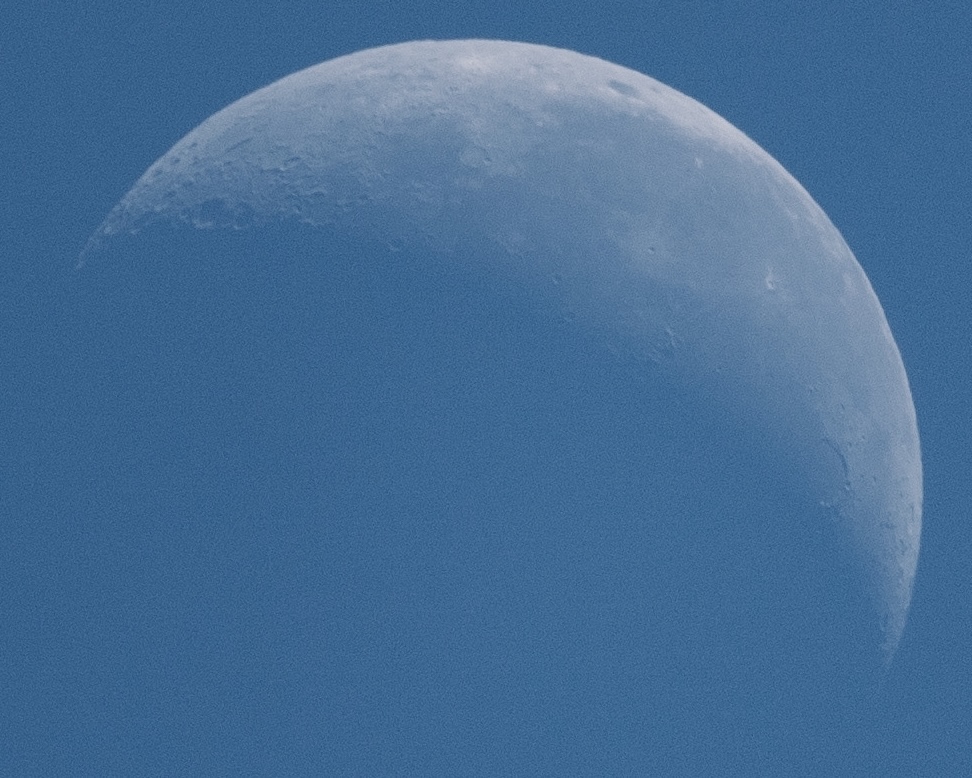
The following morning we departed, driving across more huge dry lake beds, bizarrely showing up as blue on Google Maps, heading to the tiny settlement of Pooncarie, home to 40 people.

Pooncarie is tiny now, but in the mid 1800s was an important river port, settled on the banks of the Darling River and serving all the sheep and cattle stations in the region. There is still a wharf there, with a cafe and craft shop. Somehow the village is also able to sustain a pub, where we called in and paid our $10 to camp for the night in a serviced riverside area. The Pooncarie area is inhabited by the Barkandji Aboriginal people who have been in the area for at least 40,000 years.


What a beautiful spot – an absolute haven after several hours of driving dusty, straight and corrugated roads. It was a hot afternoon, easily reaching the early 30s in the shade, and unbearable in the sun, but with a breeze blowing off the water it was lovely. We set out our chairs and enjoyed the ambience.



It was not only us that enjoyed this relatively cool riverside shade, there were plenty of birds who were obliging enough to occasionally stop still and land in unobstructed locations for a photo.





We also saw a family of goats picking their way alongside the river. These are strictly speaking feral – generations of these have been born and grown up in the wild, descended from goats that have escaped from un-fenced farms in the 1800s. They do a lot of damage to the plants, munching up young seedlings and changing the landscape with their hooves. But, it seems, they have now been accepted as a source of potential money, with Australia now being the world’s largest exporter of goat meat – mostly to the USA. Of course they don’t call them feral goats in their marketing – these are known as ‘rangeland goat meat’. There have even been thoroughbred Bauer goats released into the wild to help improve the meat quality through inter-breeding.

It was a lovely overnight stay, and Tassie enjoyed a final explore around the area before we took off the next morning, again farewelling the life giving river and travelling the red dusty roads towards Menindie.






